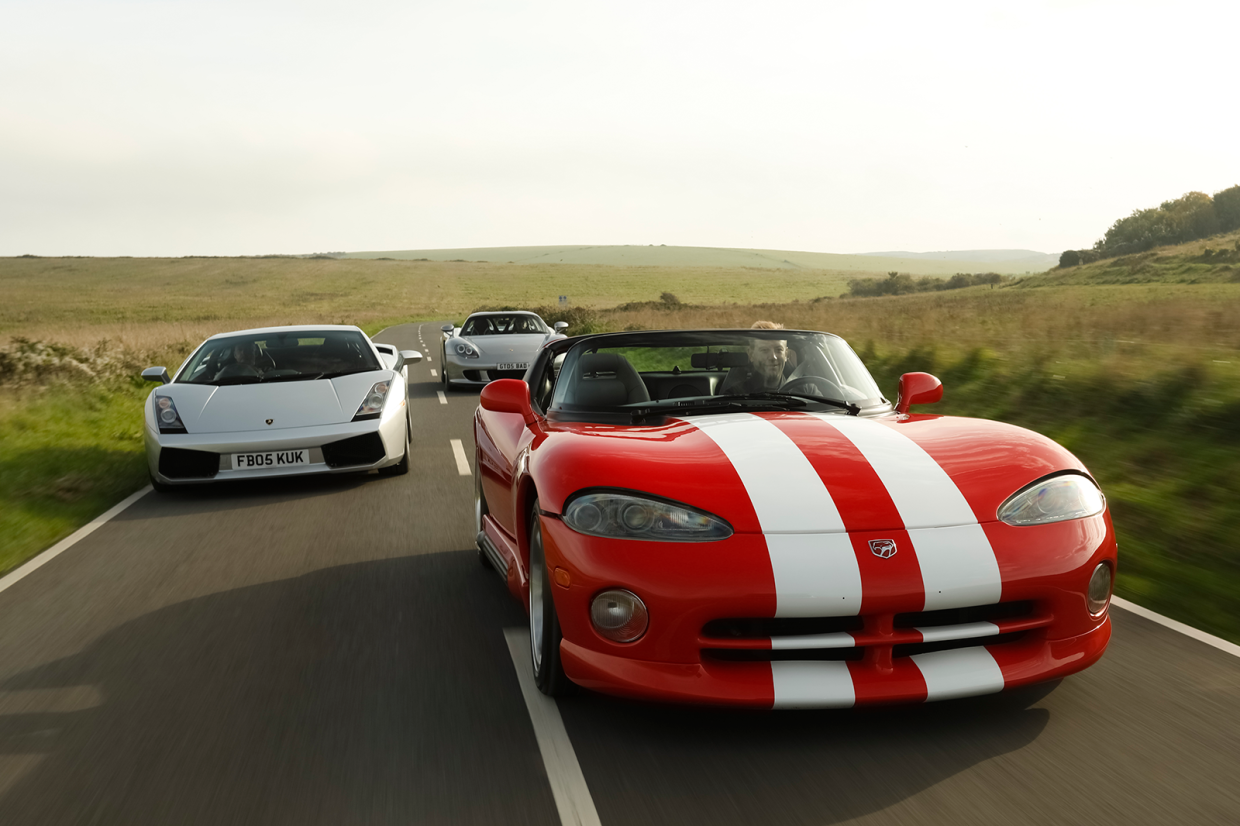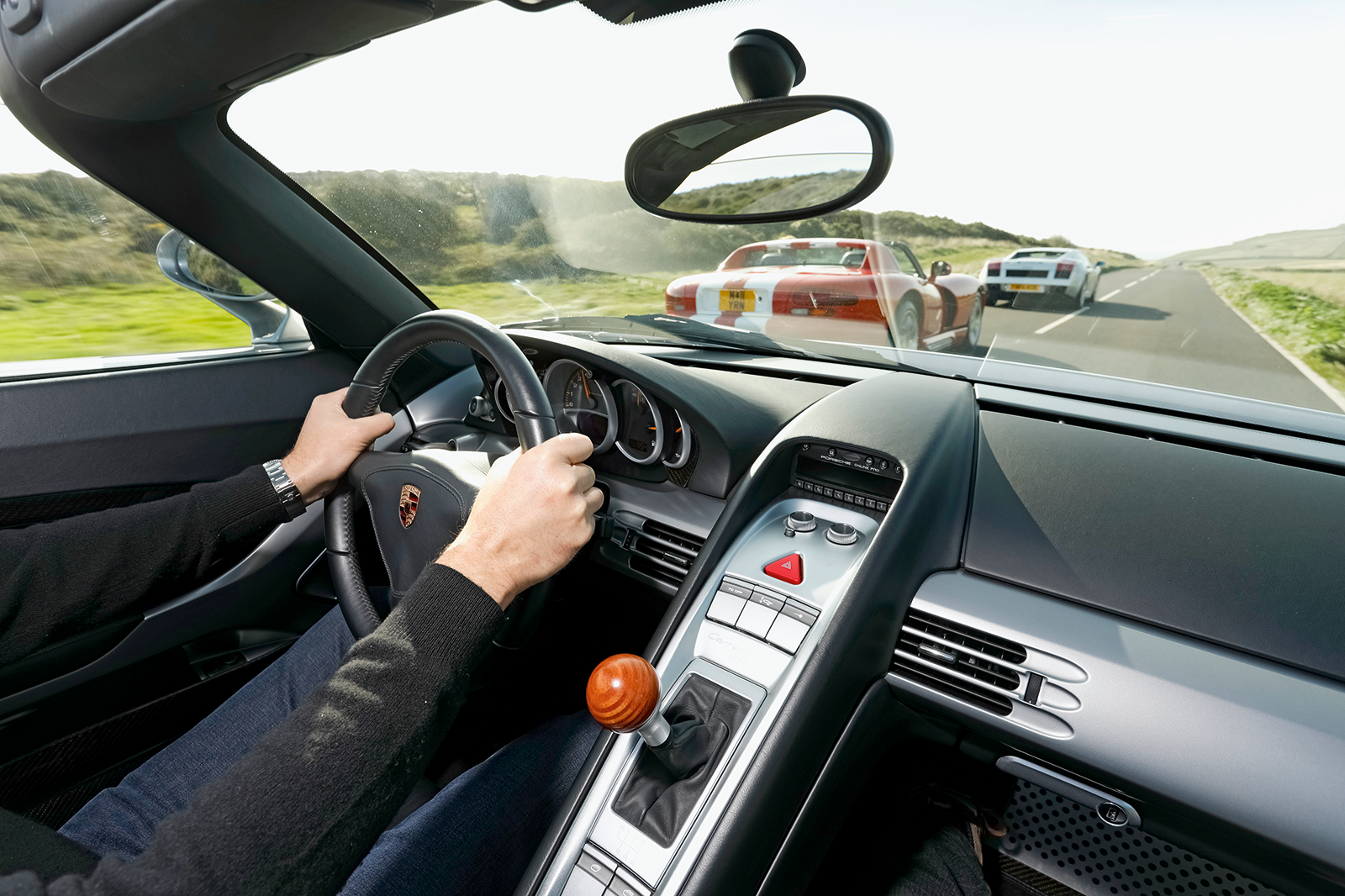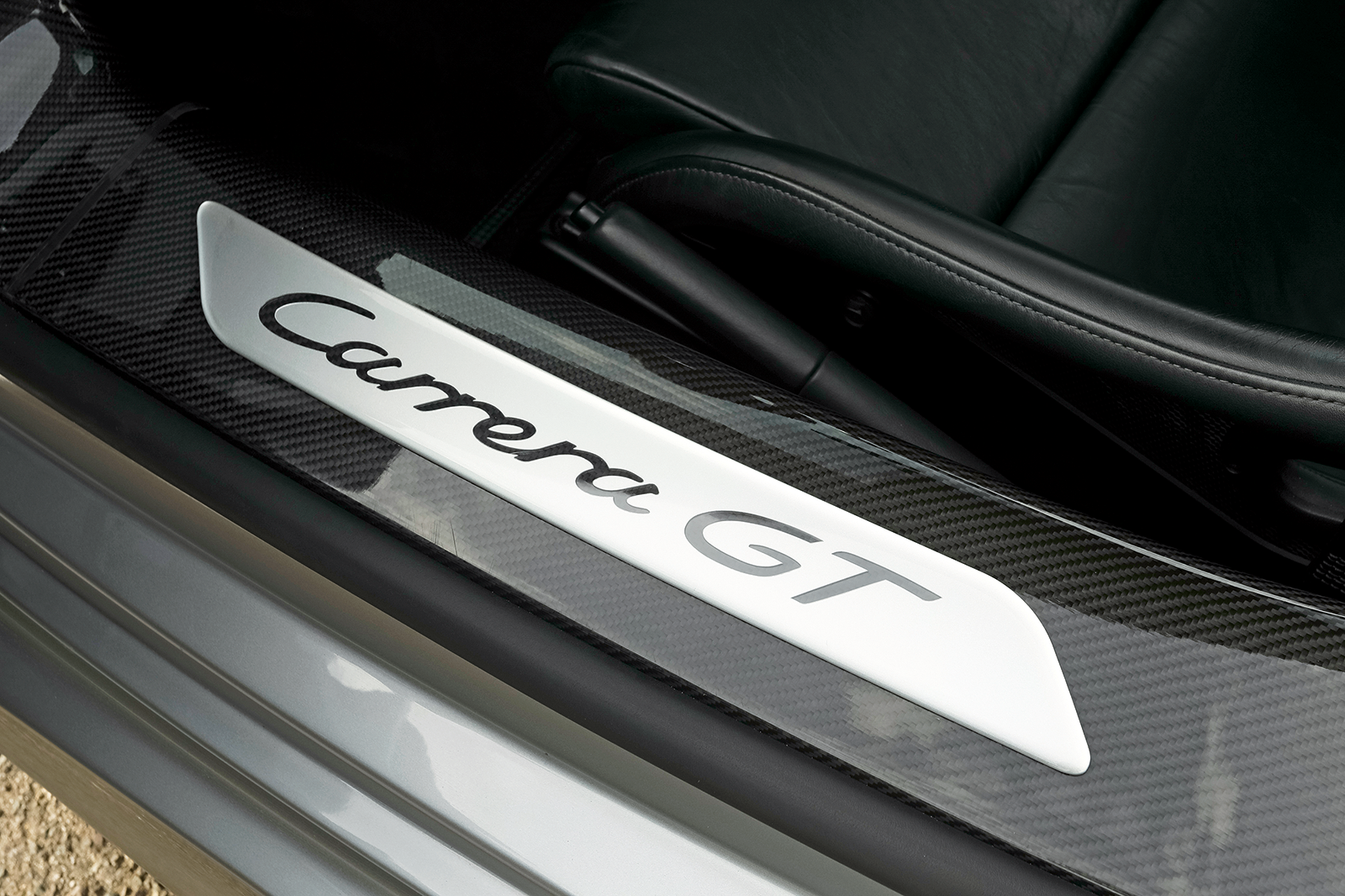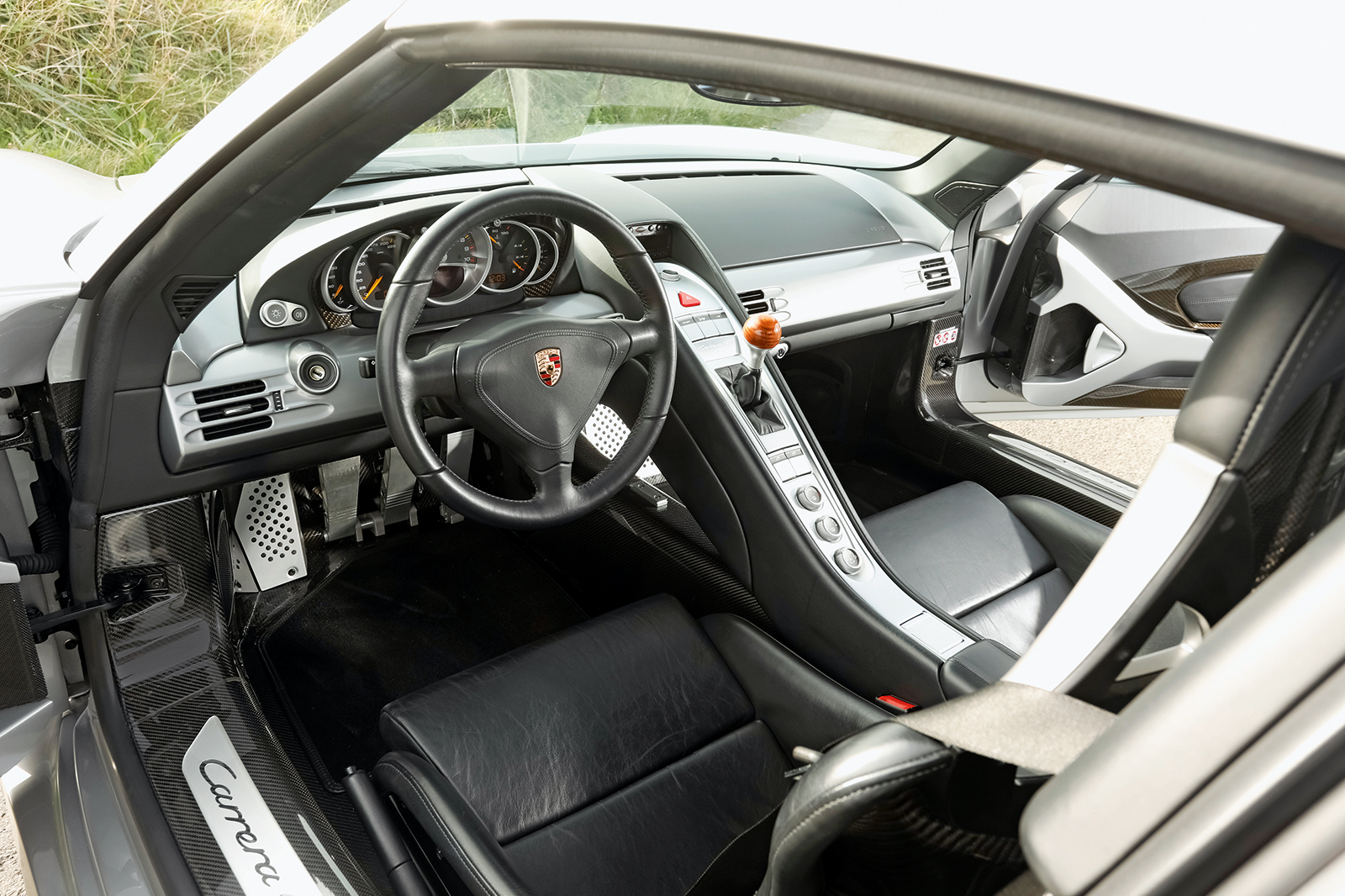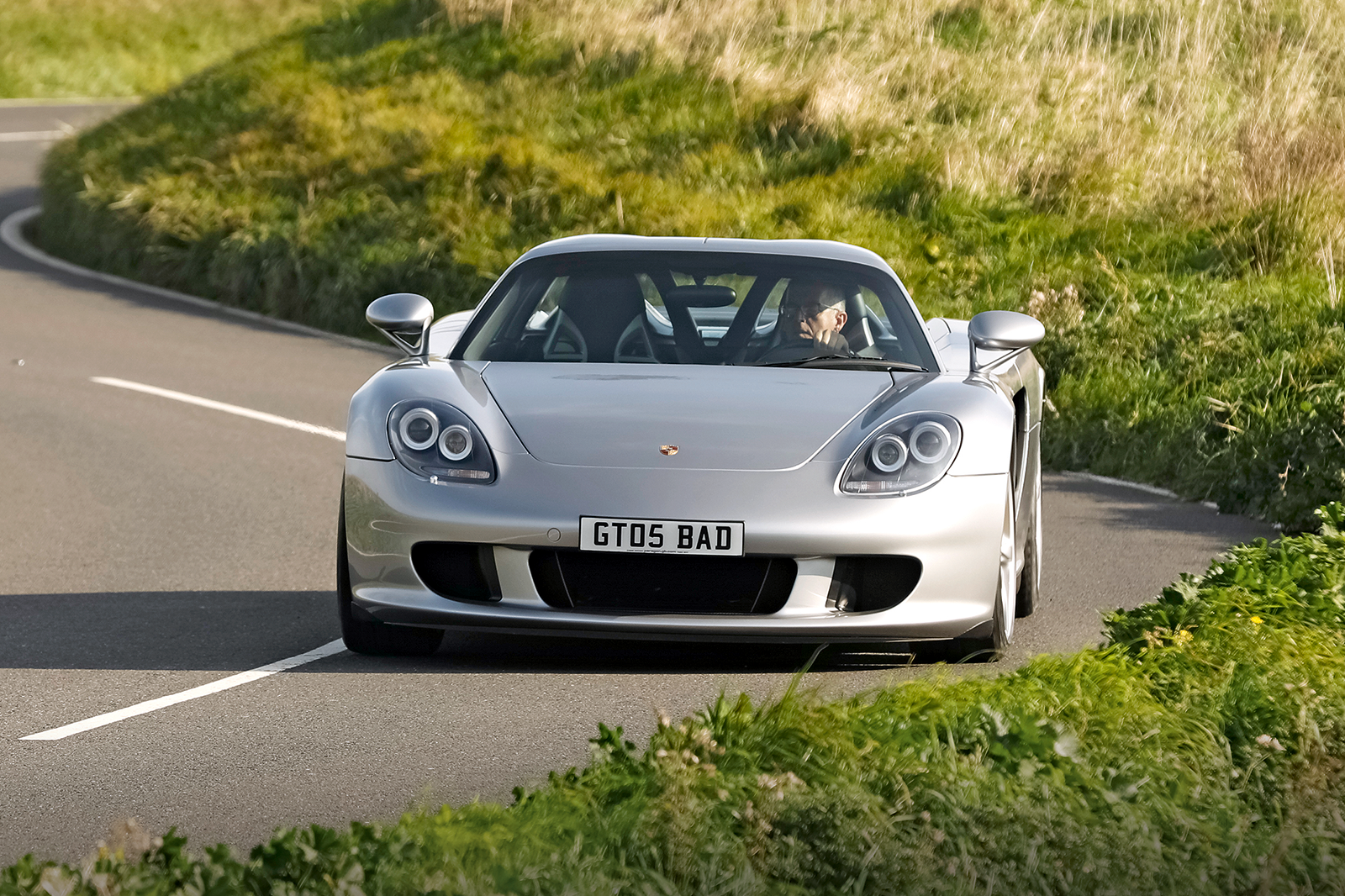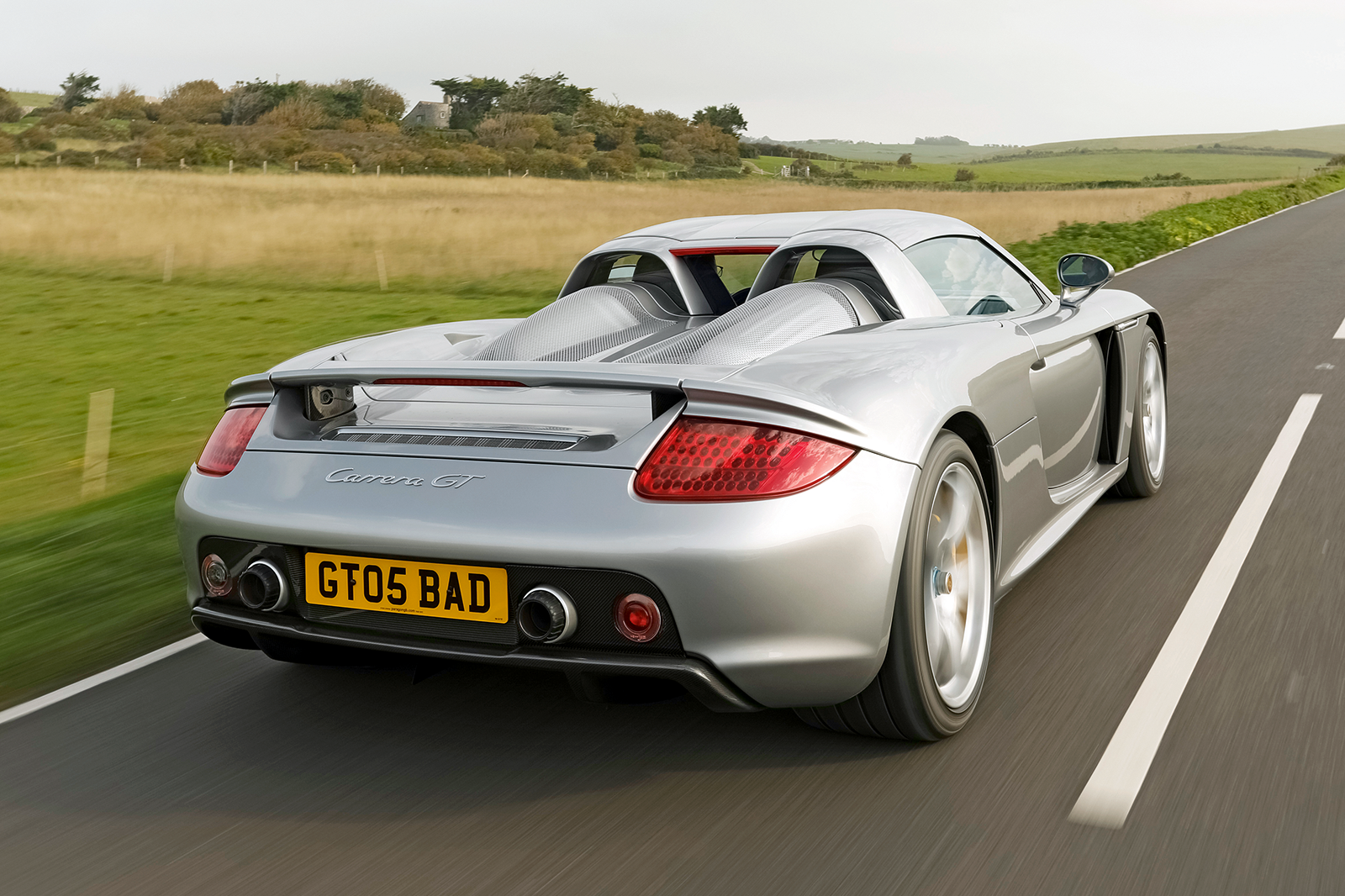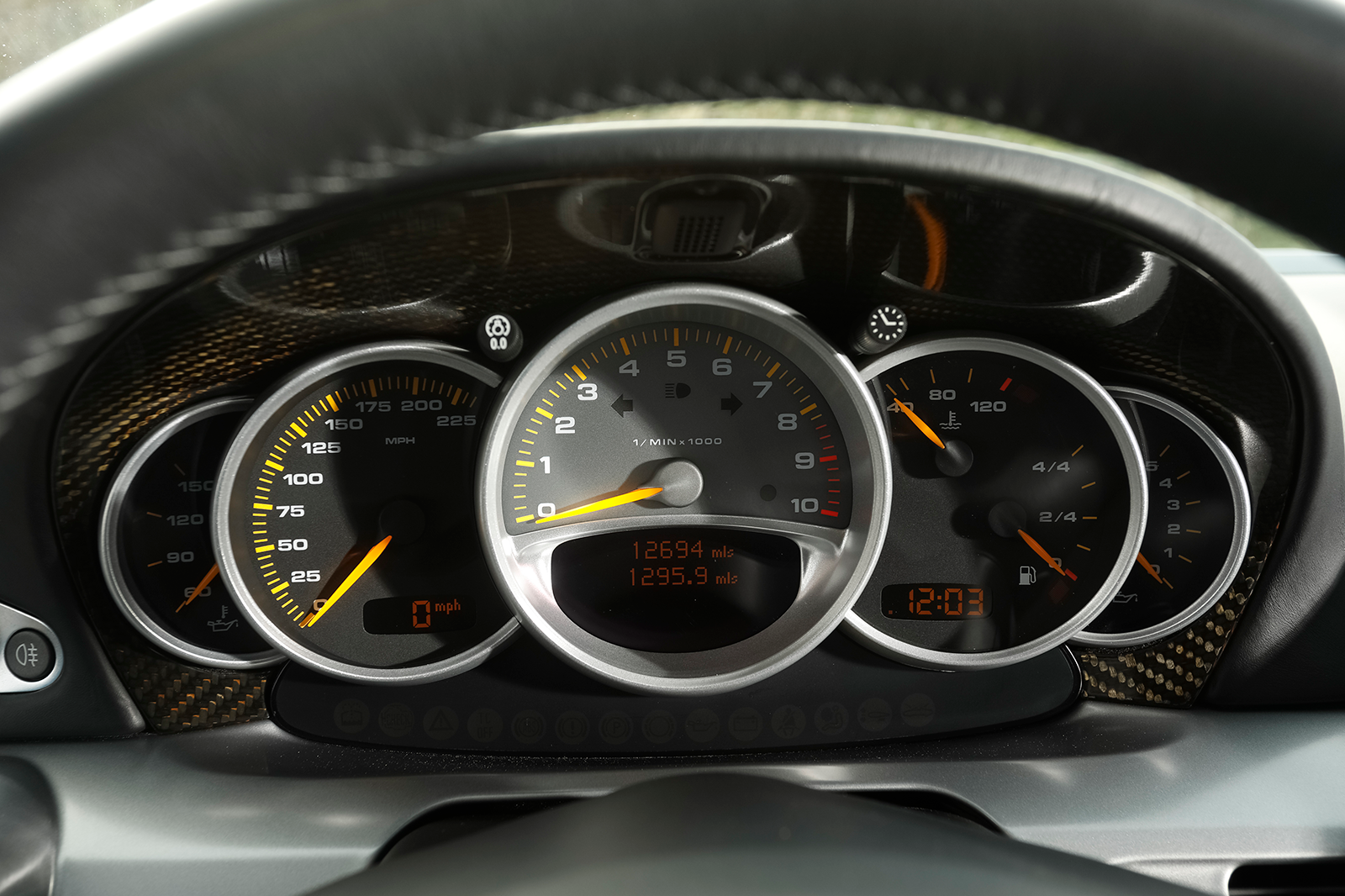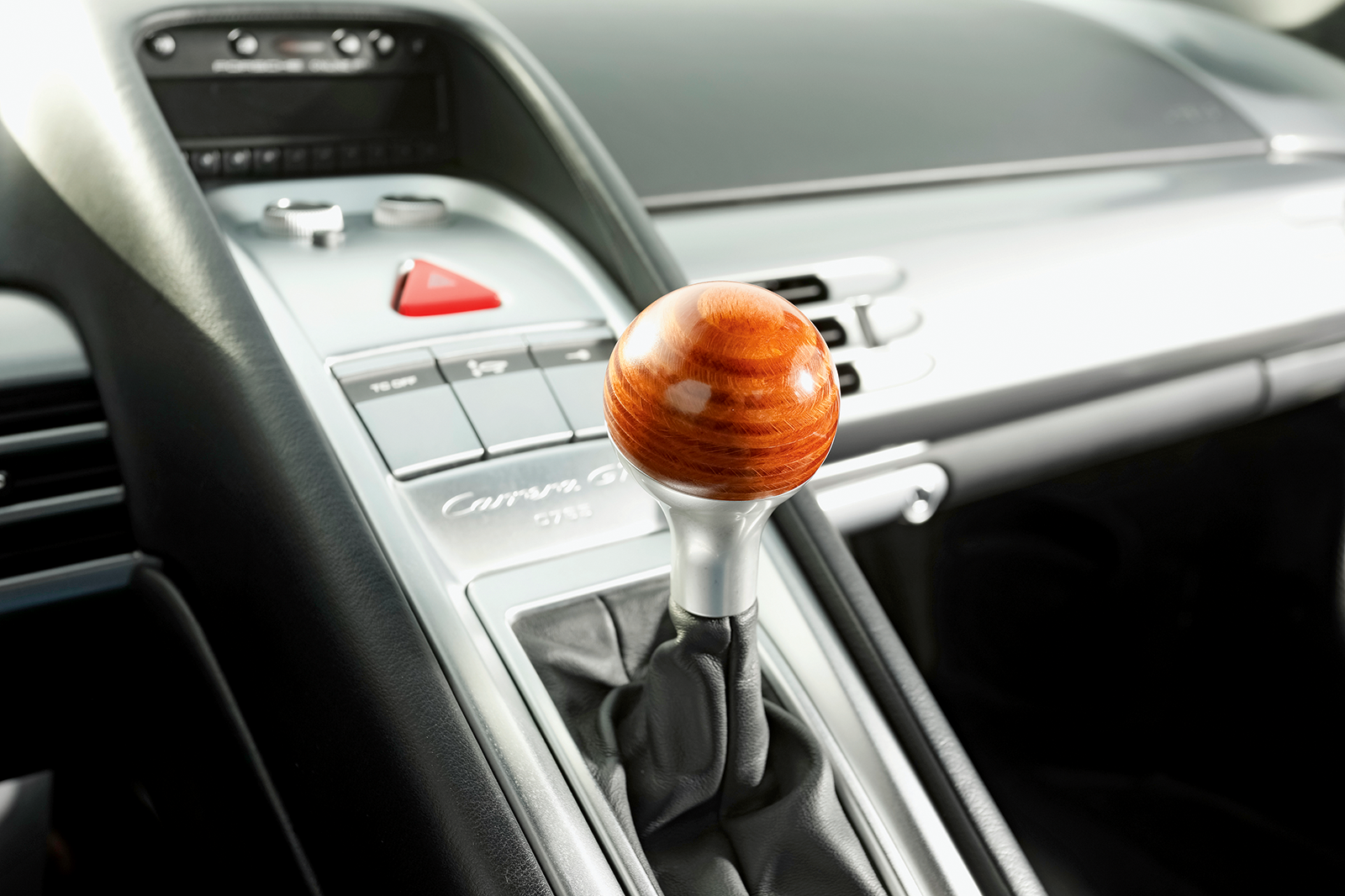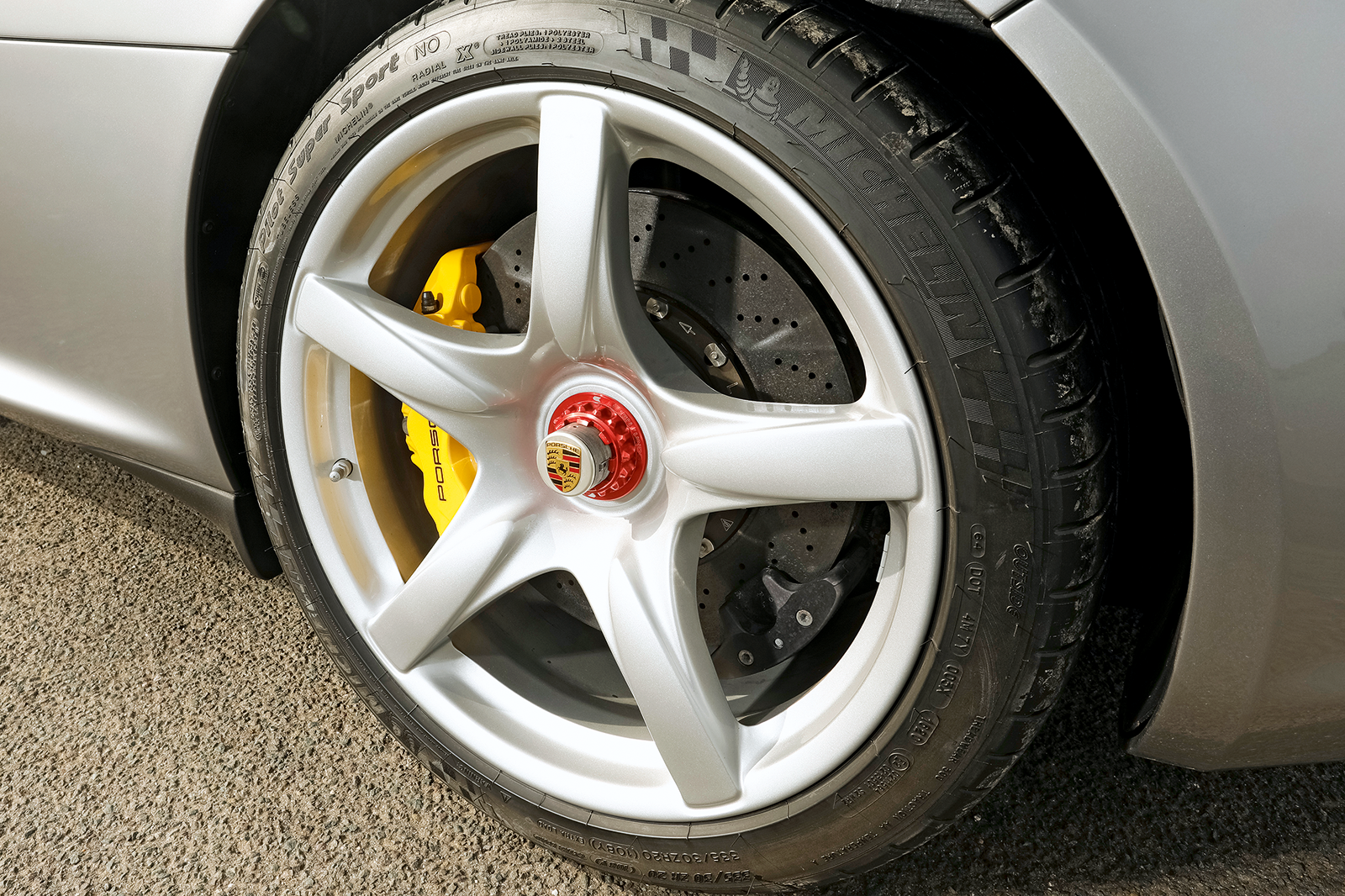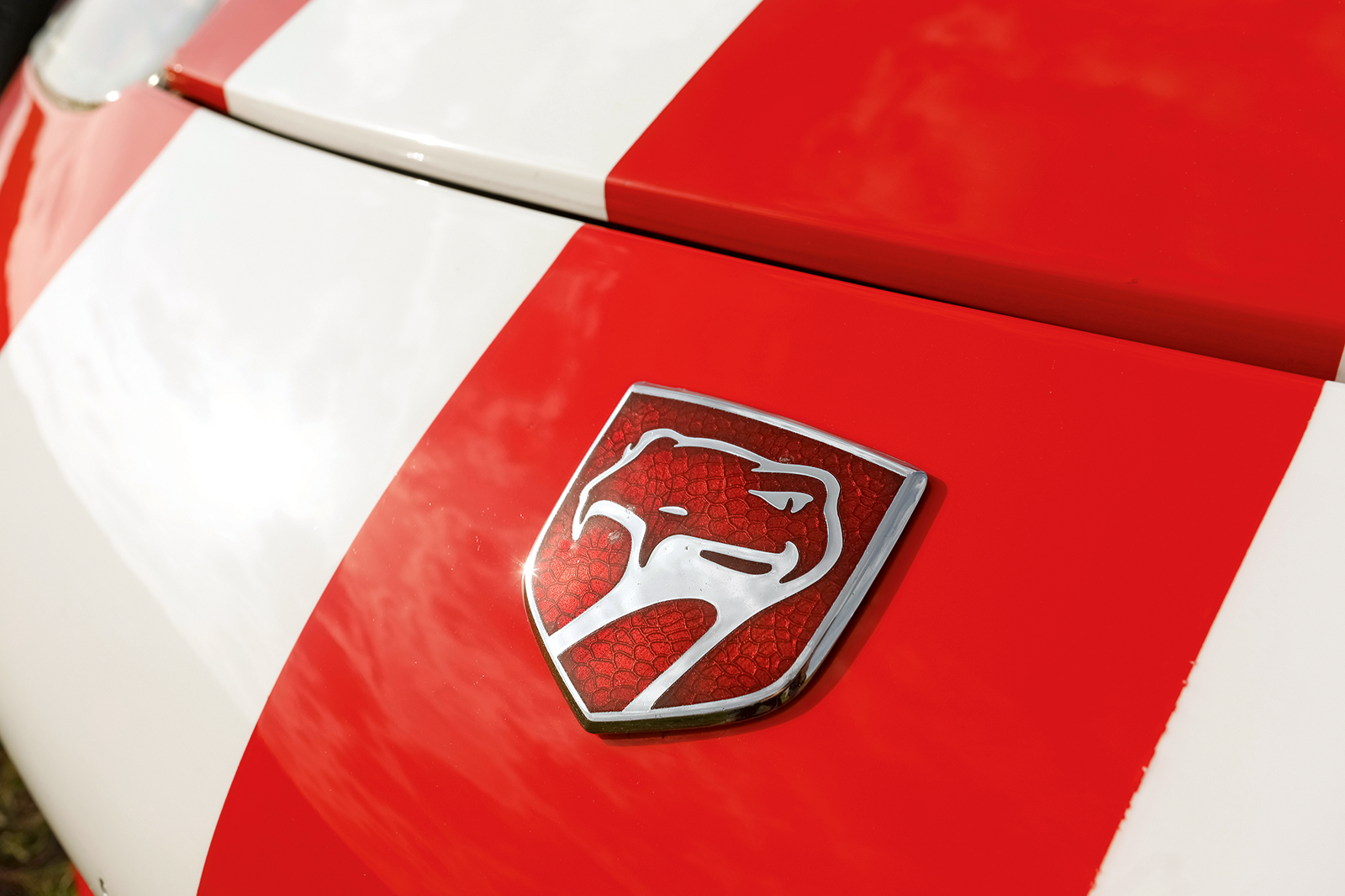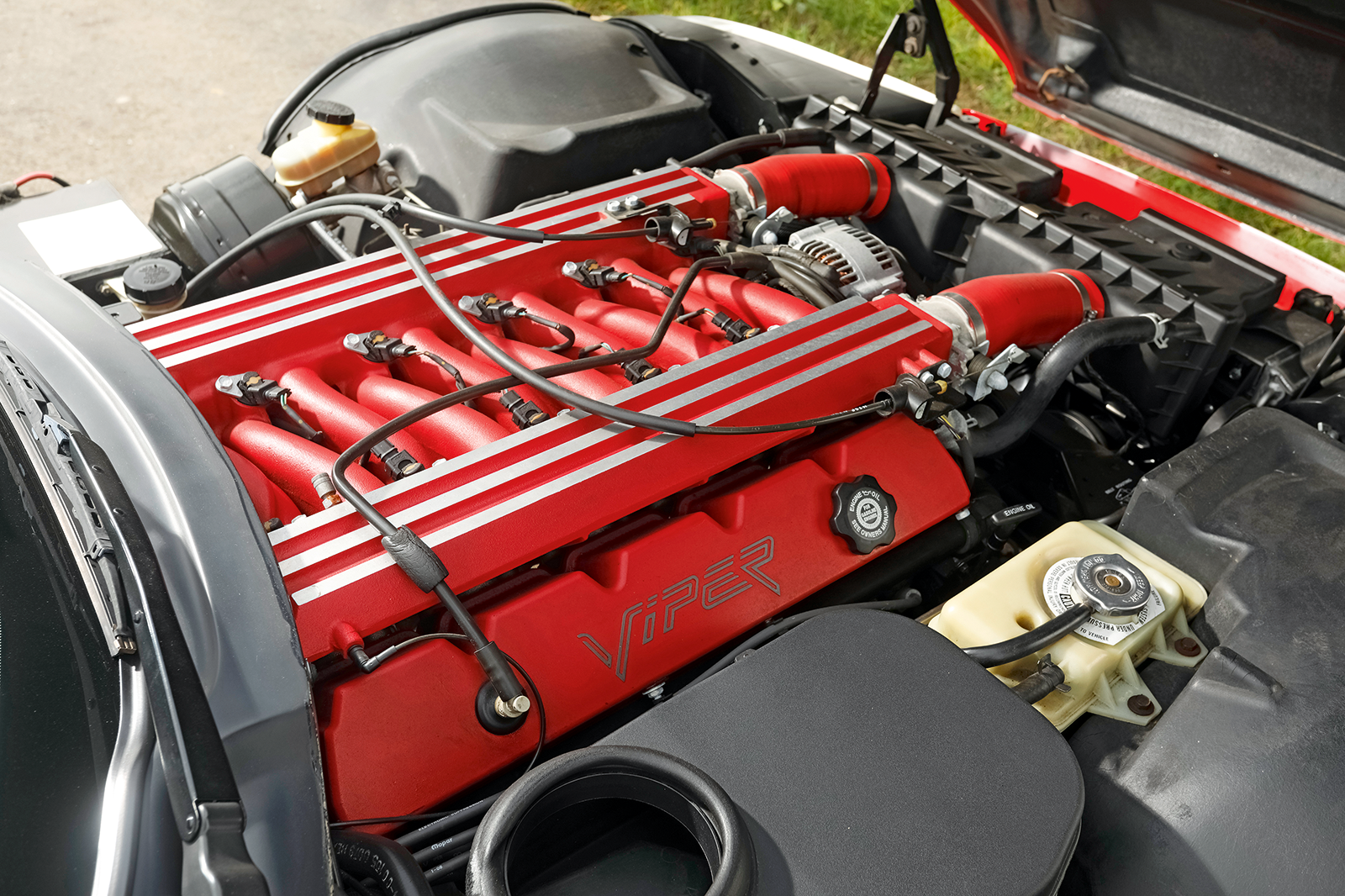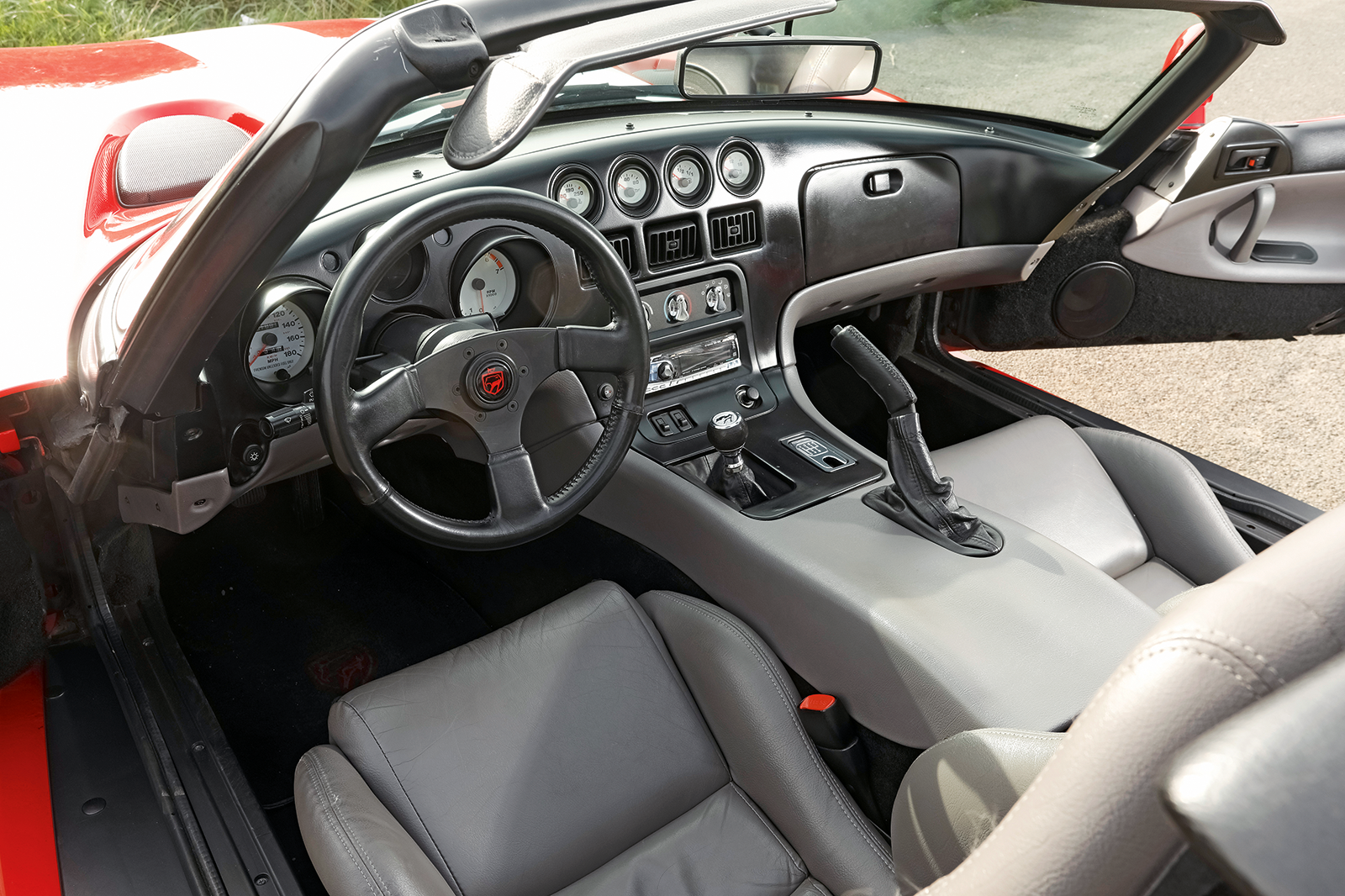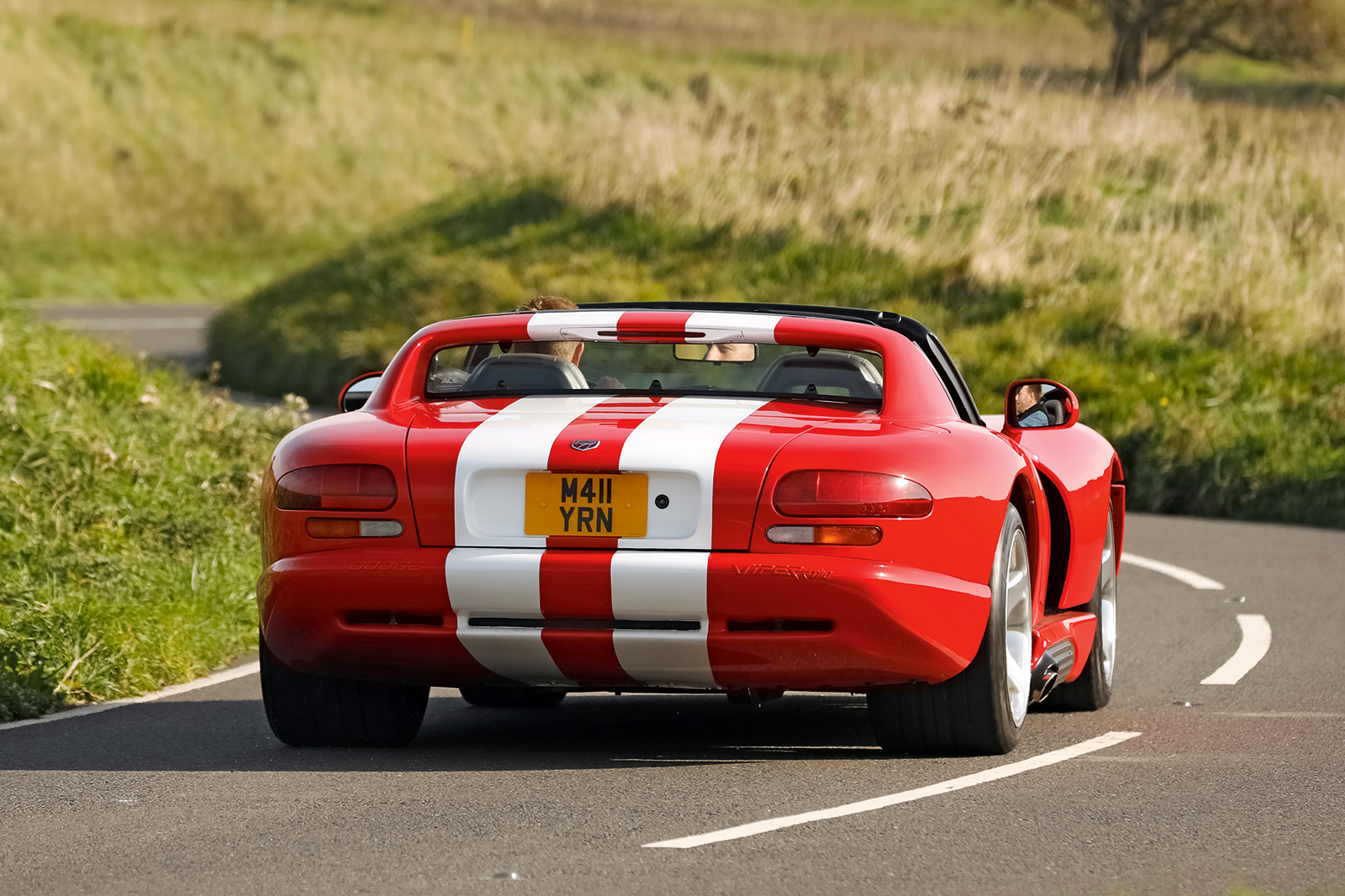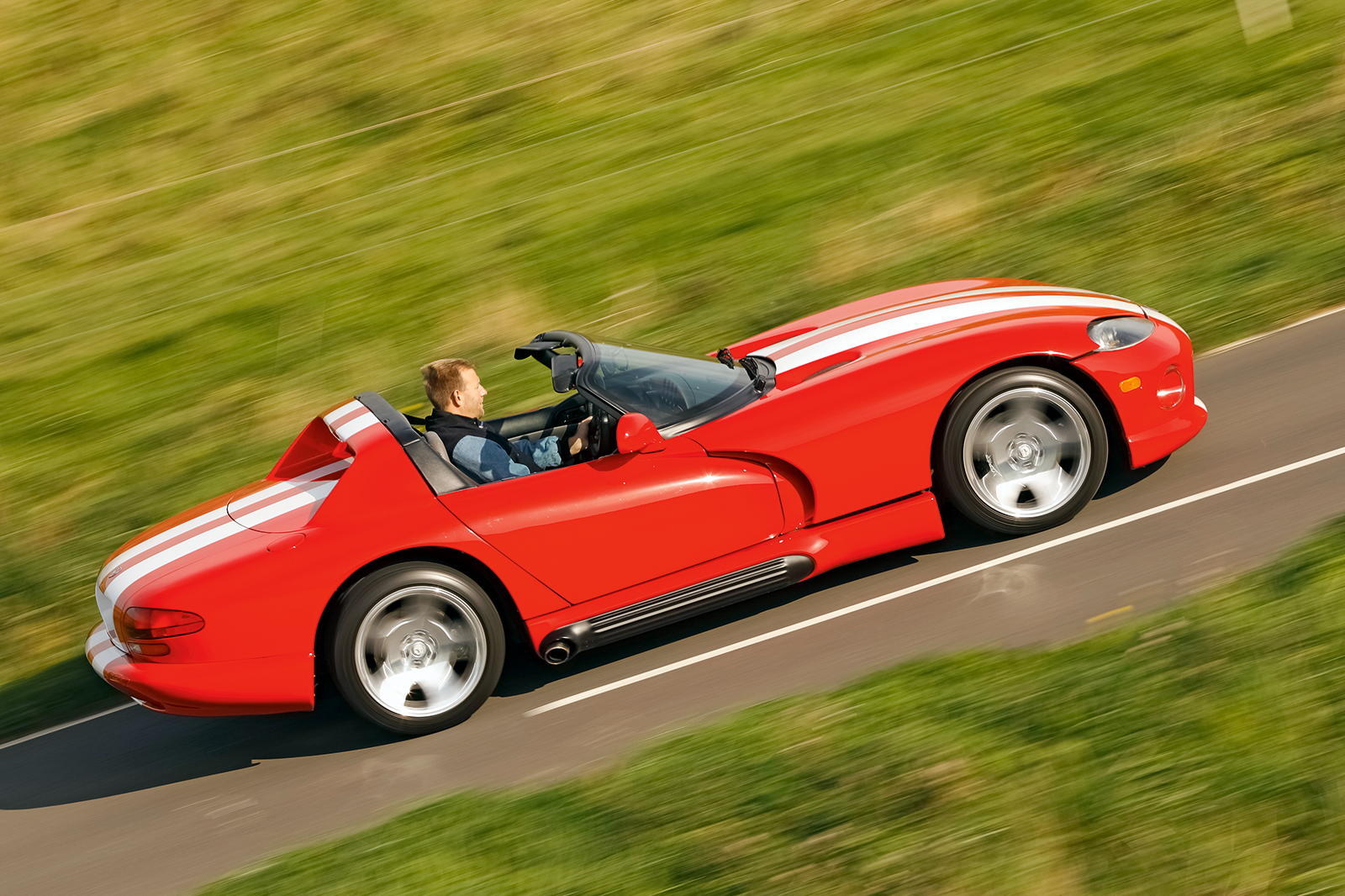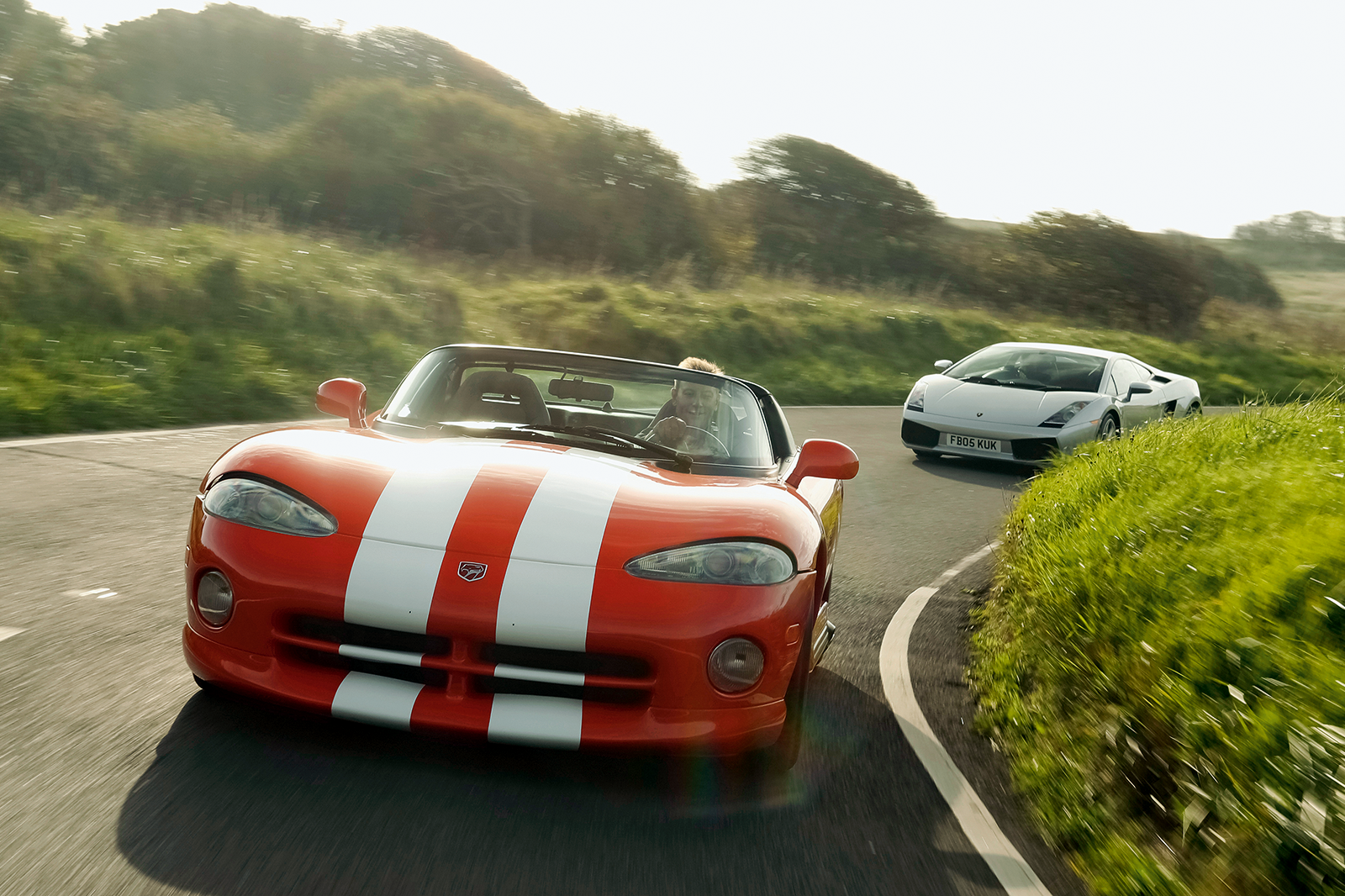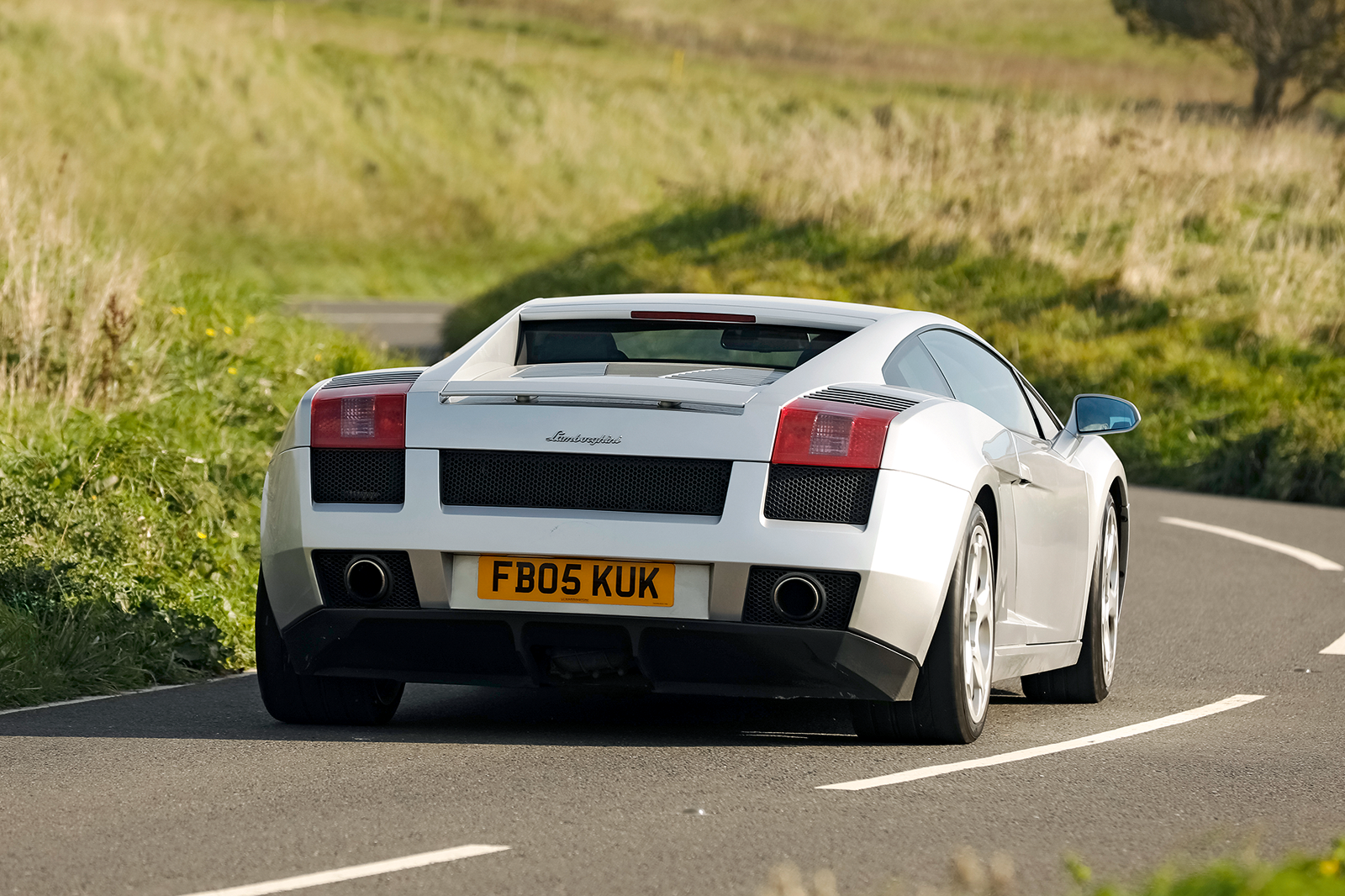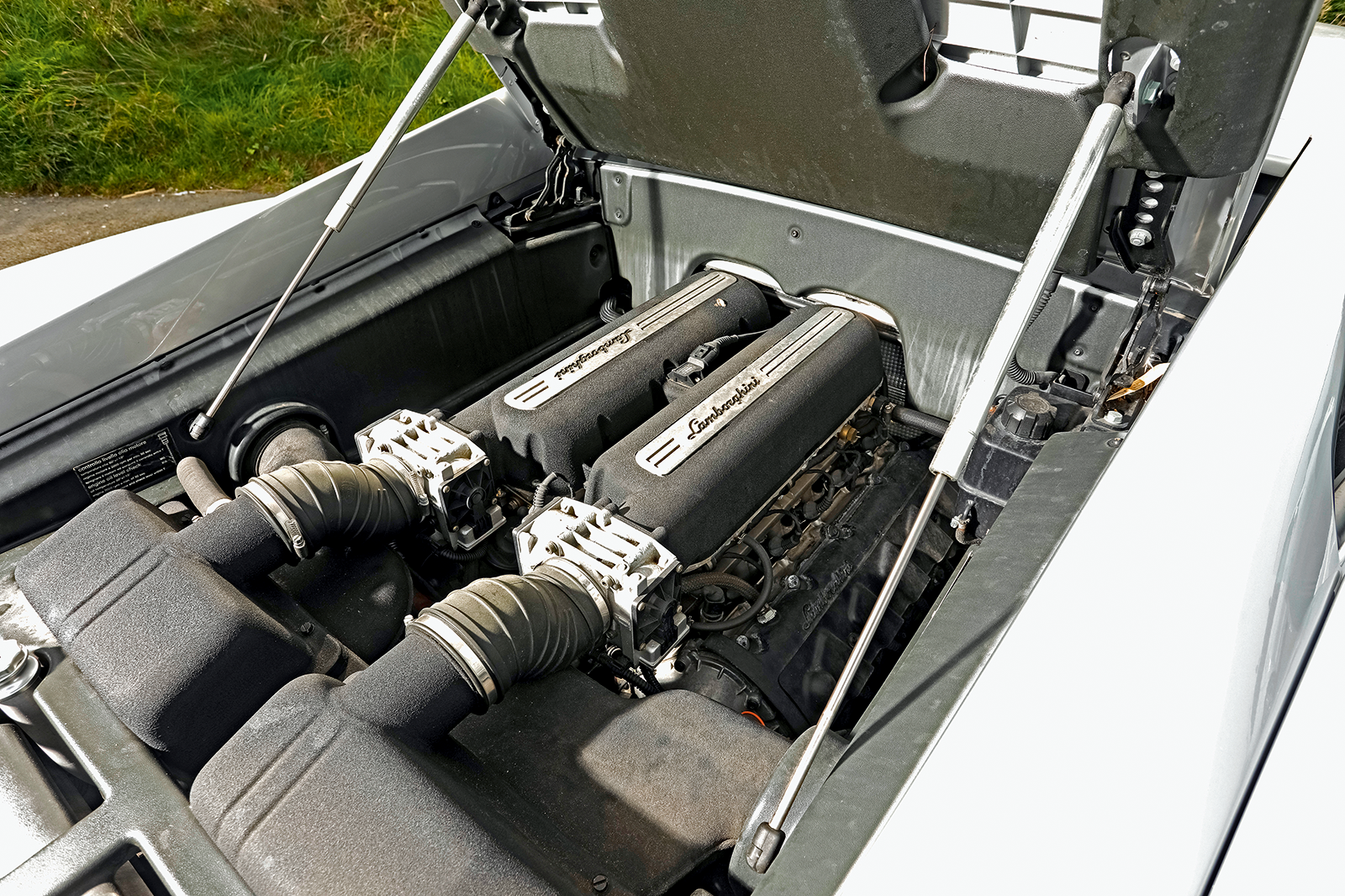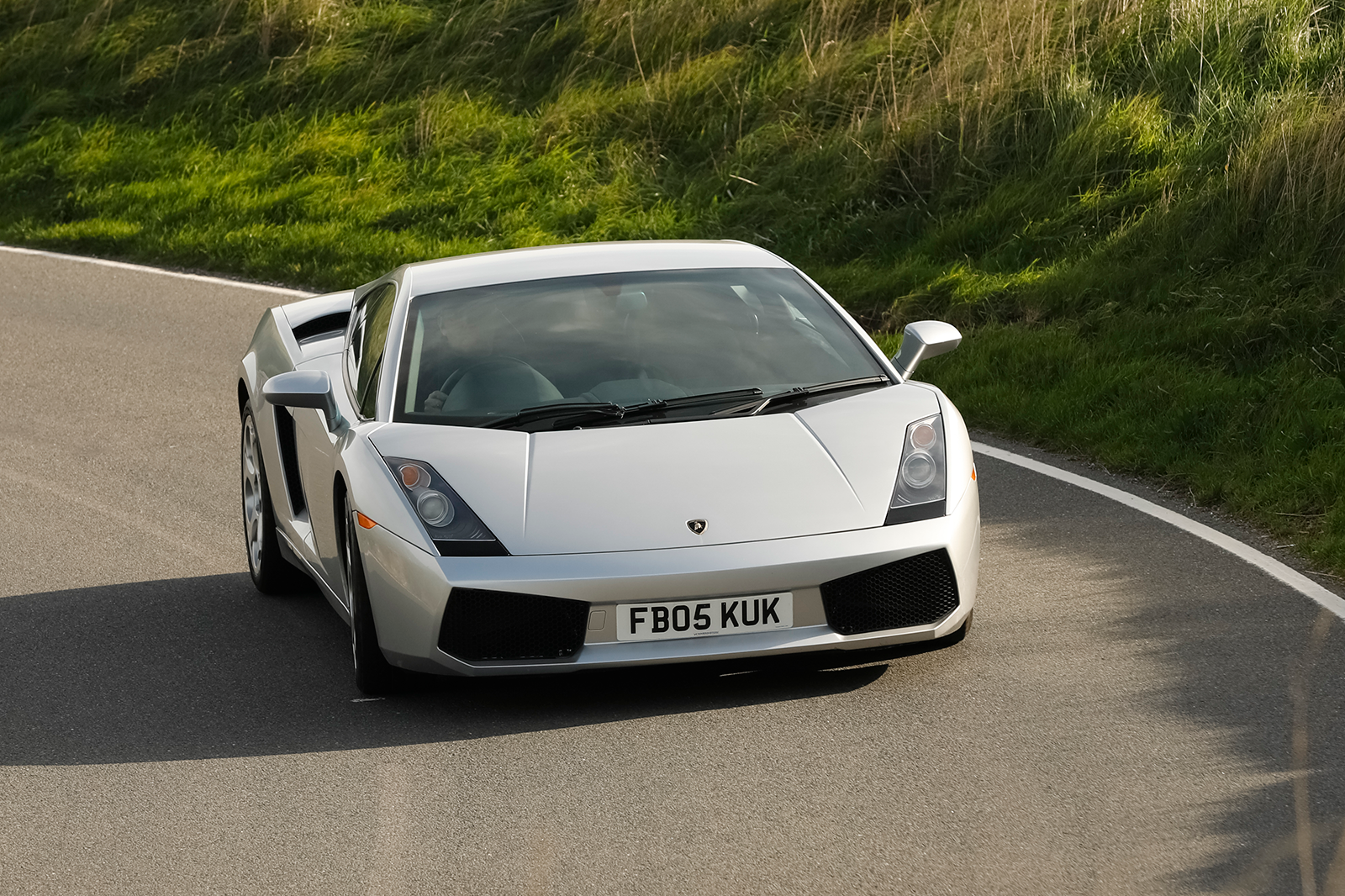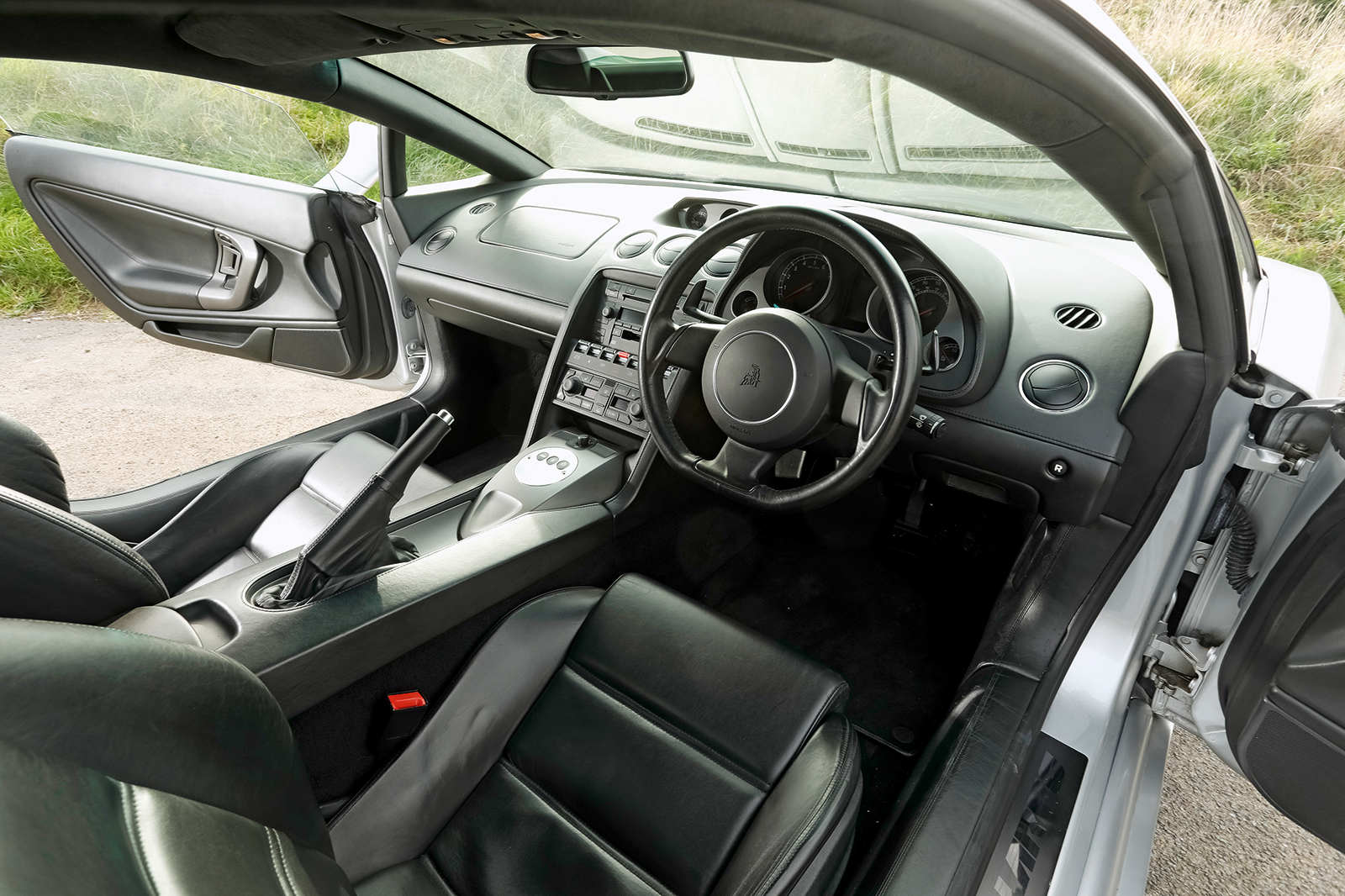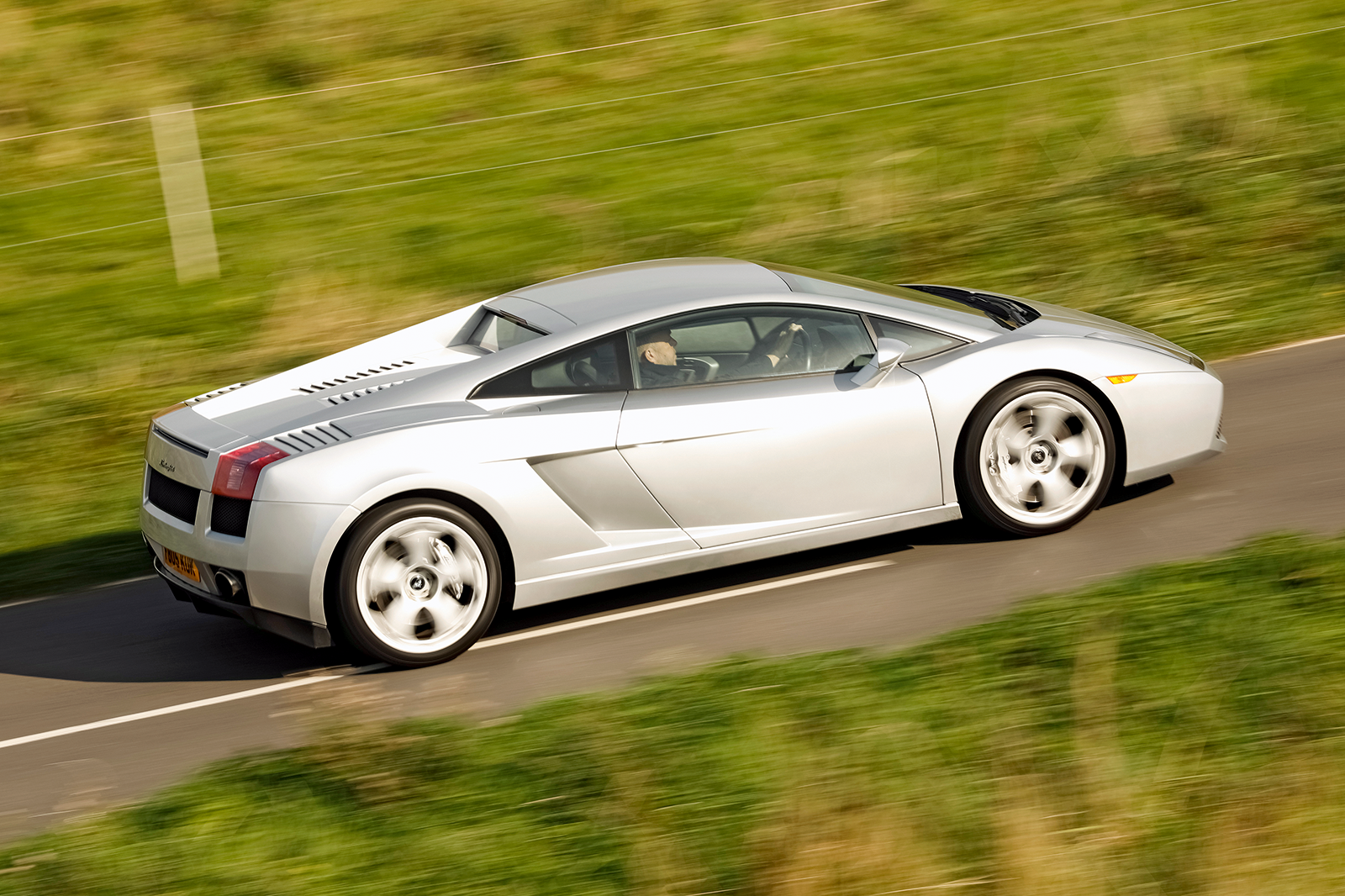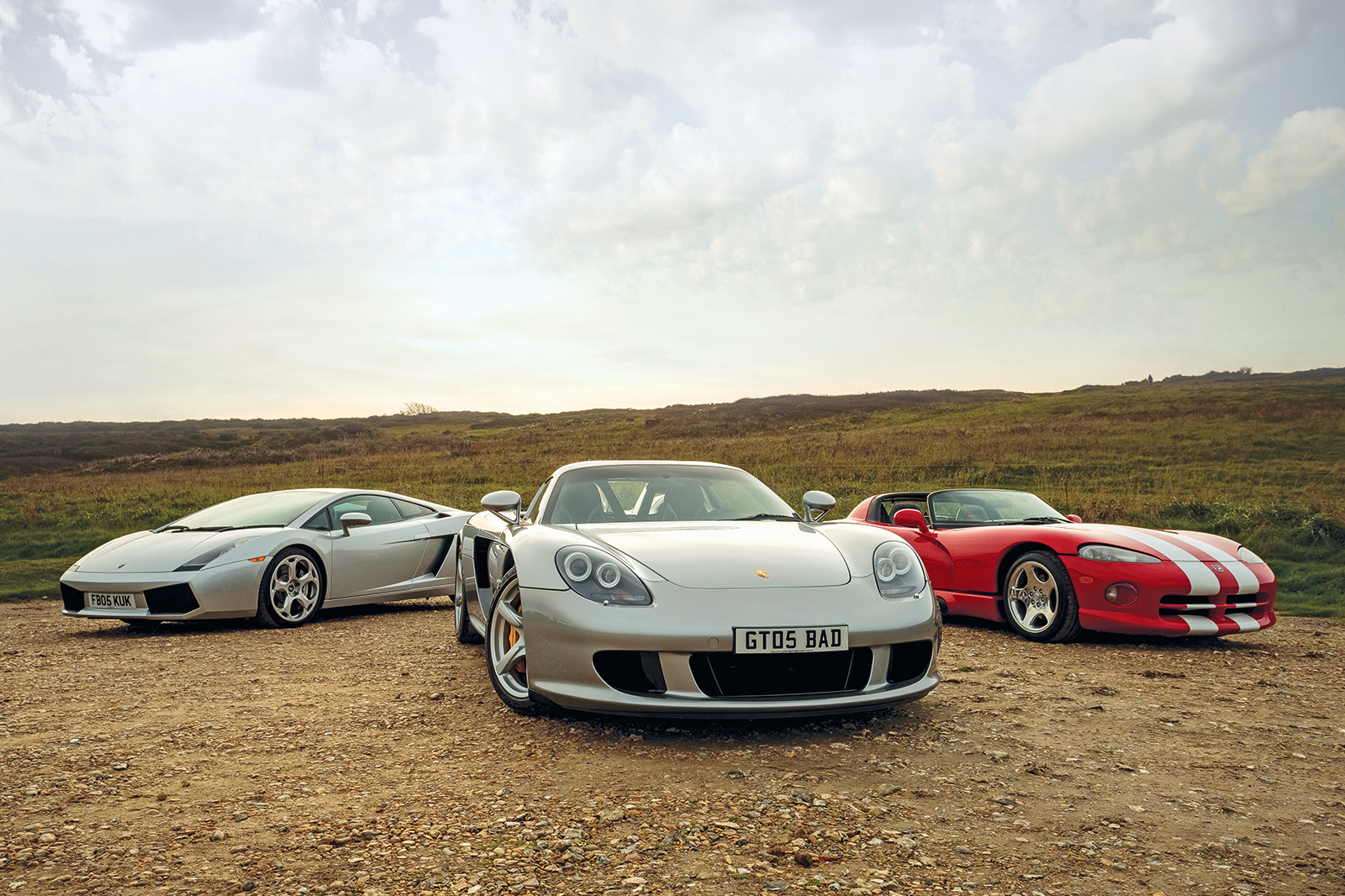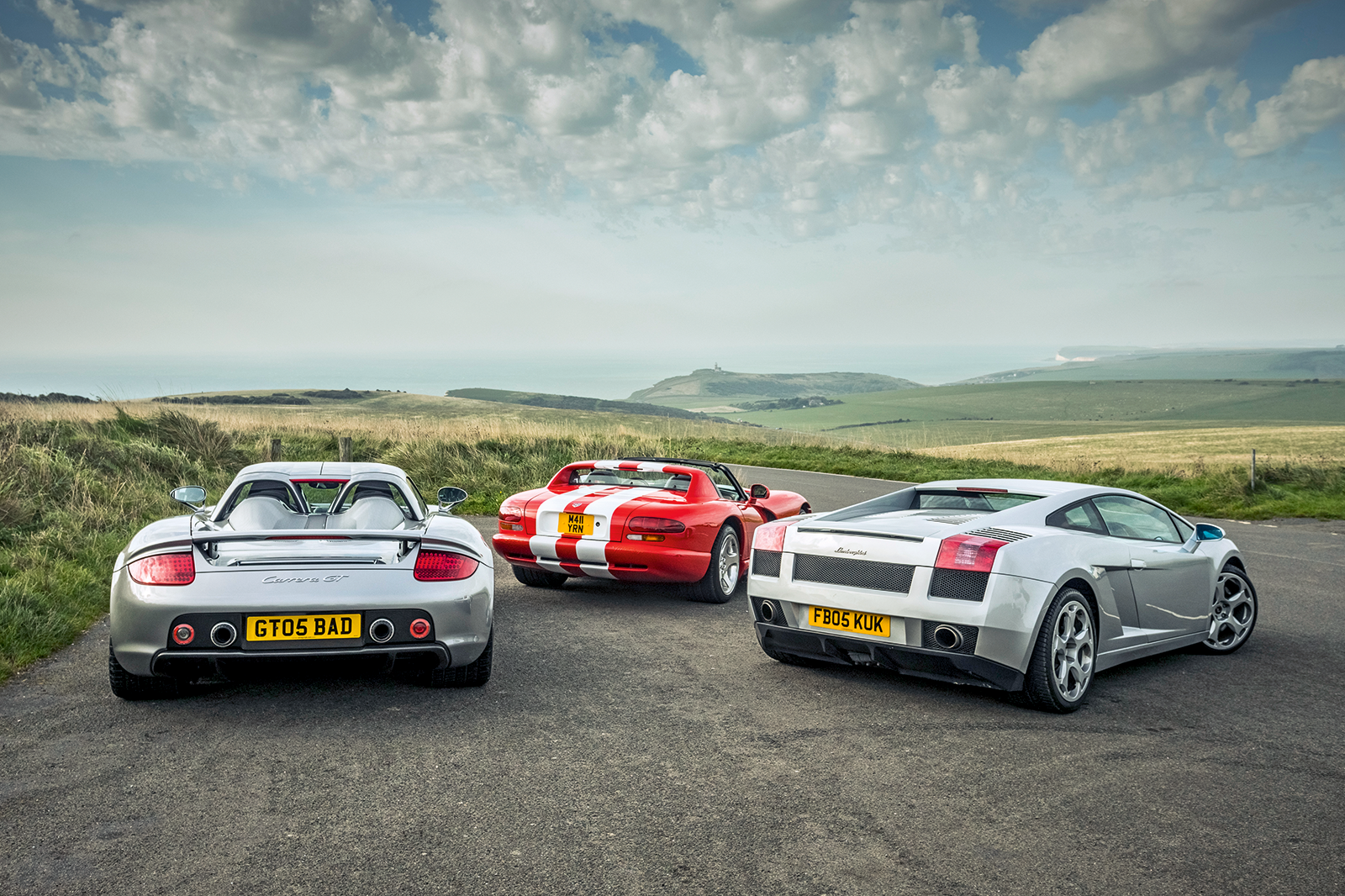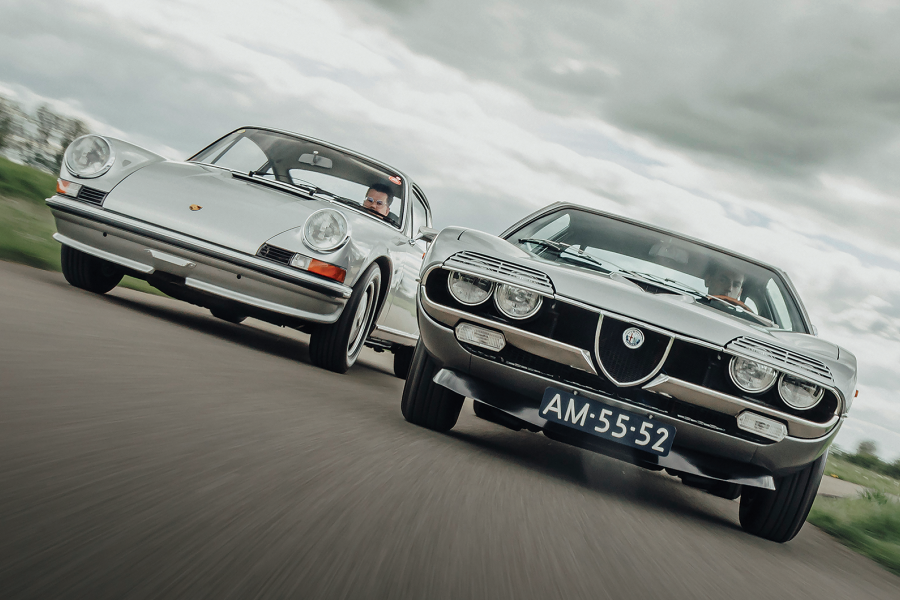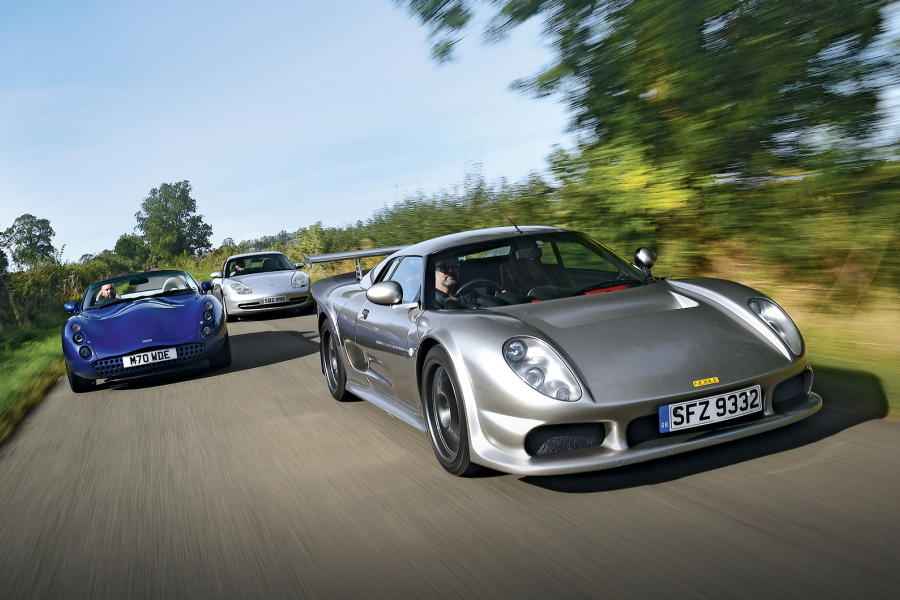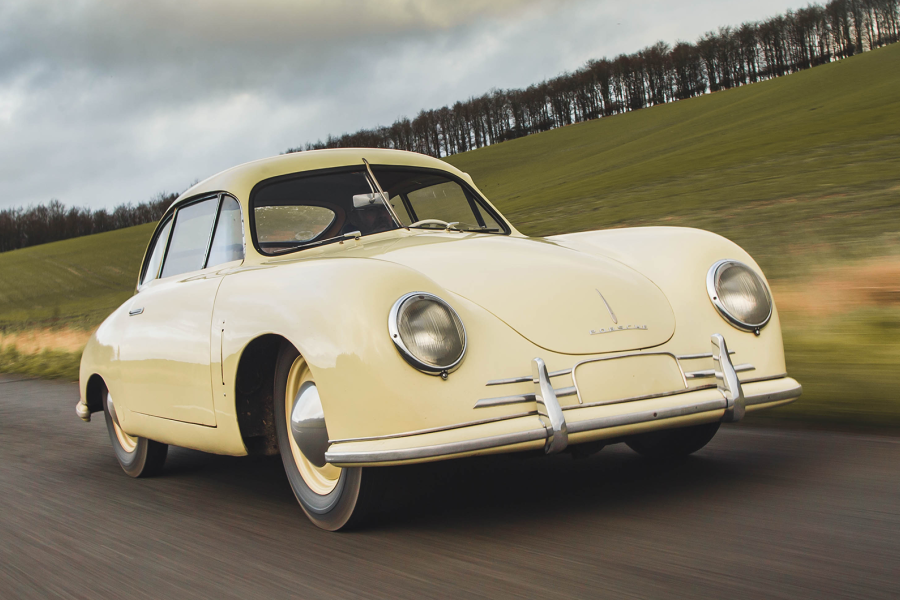All of which makes the Lamborghini seem quite tame in comparison.
Andrew Phillips’ first-generation Gallardo is a fairly recent acquisition but, illustrating how usable and well-made these Audi-funded models are, he has already taken it on a glitch-free southern European tour, along with his wife (and dog!).
It still looks remarkably modern, despite being launched two decades ago, yet you can trace its sharp-edged, angular design back to the Countach.
The Gallardo’s V10 was conceived to trump Ferrari
But there’s no sign of that model’s flamboyance when you plop down into the deeply bolstered driver’s seat.
Austerity reigns in the cabin, with the levelled-off steering-wheel base being the only hint of drama.
But despite the unrelenting blackness of the surroundings, ergonomically it’s only a notch down from the Porsche, and you can see why Andrew had no qualms about taking on a 2000-mile journey immediately after buying the car.
That’s borne out when you drive the Gallardo.
All-wheel-drive helps the Lamborghini to feel very sure-footed on the road
It simply requires minimal effort at anything below breakneck speeds, its V10 finding extra urge from 3000rpm and developing a hard-edged and addictive roar from 6500rpm.
While it lacks the ultimate aural theatre of the Porsche, you can imagine schlepping easily across the Italian Alps, its four-wheel drive keeping everything in check, and arriving relaxed and comfortable at your destination.
Andrew’s car has the e-gear system, which needs a quick lift between slowish changes to avoid you and your passenger nodding like Churchill dogs, but it’s otherwise seamless.
The Gallardo’s cabin is surprisingly understated, and the e-gear ’box needs nursing a little at low speeds
The steering is quite mute and relatively low-geared for a supercar, but it’s accurate enough and there’s grip aplenty, bleeding into gentle understeer as you push harder.
In my Viper notes, ‘RESPECT’ is writ large at the bottom of the page.
I scribbled that immediately after driving HPC Classics’ car because the Dodge feels so open about its mission to send you into the scenery if you take one too many liberties.
Handled with care, however, here lurks a thoroughly well-sorted car.
There are faint echoes of the Lamborghini Countach in the Gallardo’s tail
You may not think so initially, as you reach inside for a handle to open the door (a button on the keyfob performs the same function) before making yourself at home in the left-side driver’s seat.
There’s really nothing to the Viper’s control centre: six dials (two main, four ancillary across the upper dash), a cigarette lighter, heater knobs and a couple of foglight rockers. That’s your lot.
The leather-trimmed three-spoke steering wheel is minus airbag and, other than the (very comfortable) seats themselves, nothing else is textured in the broad cabin.
‘The Gallardo needed to beat Ferrari at its own game, and the V8 360’s 400bhp looked almost puny in comparison’
Hard plastic surfaces proliferate, all with rather approximate fit and finish.
Who cares? Release the heavy clutch, and you wonder why on earth the Viper came with six gears, when four would have been ample given the 8-litre V10’s ship-pulling surplus of torque.
The shift itself is surprisingly light and precise, which, along with well-weighted and communicative steering, makes the Dodge feel honest to drive, unencumbered by any electronic interference.
‘More than a decade separates the Dodge [right] from the Lamborghini [left] and the Porsche, but the V10 engine beguiles in all three’
That purity does start to get quite exciting sometimes, because this is still a one-and-a-half-tonne, sub-five-to-60 car.
When you accelerate hard over bumpy or cambered surfaces, it can feel as if the Viper is sprouting devil horns, and every nerve and sinew is focused on keeping it on the straight and narrow. It’s character-building, for sure.
This could never be a straight comparison. More than a decade separates the Dodge from the Lamborghini and Porsche, and while a Viper and Gallardo will now cost from £50-70k, the Carrera GT is worth well north of £1million.
The V10 engine beguiles in all three, but the Lamborghini’s blend of year-round usability and genuine supercar looks makes it the most compelling choice for the money.
Images: Tony Baker
Thanks to: Simon Drabble; Miles Hardy, HPC Classics
Factfiles
Porsche Carrera GT
- Sold/number built 2004-’06/1270
- Construction carbonfibre-reinforced plastic monocoque, carbonfibre panels
- Engine all-alloy, dohc-per-bank 5733cc 68° V10, Bosch ME 7.11 sequential multi-point fuel injection
- Max power 612bhp @ 8000rpm
- Max torque 435lb ft @ 5750rpm
- Transmission six-speed manual, RWD
- Suspension independent, by rose-jointed double wishbones with pushrod-operated inboard spring/damper units, anti-roll bar f/r
- Steering power-assisted rack and pinion
- Brakes ventilated composite ceramic discs, with servo and anti-lock
- Length 14ft 9¾in (4513mm)
- Width 6ft 3½in (1921mm)
- Height 3ft 8¾in (1166mm)
- Wheelbase 8ft 11½in (2730mm)
- Weight 3245lb (1472kg)
- 0-60mph 3.7 secs
- Top speed 205mph
- Mpg 15.8
- Price new £330,000
- Price now £1.3million*
Dodge Viper RT-10
- Sold/number built 1992-’96/6709
- Construction tubular-steel spaceframe chassis, composite glassfibre body
- Engine all-alloy, ohv 7997cc 90° V10, electronic fuel injection
- Max power 400bhp @ 4600rpm
- Max torque 450lb ft @ 3600rpm
- Transmission six-speed manual, RWD
- Suspension independent, by unequal-length wishbones, coil springs, telescopic dampers, anti-roll bar f/r
- Steering power-assisted rack and pinion
- Brakes ventilated discs, with servo
- Length 14ft 7in (4448mm)
- Width 6ft 3¾in (1923mm)
- Height 3ft 8in (1118mm)
- Wheelbase 8ft (2443mm)
- Weight 3355lb (1522kg)
- 0-60mph 4.6 secs
- Top speed 165mph
- Mpg 15
- Price new £55,000
- Price now £50,000*
Lamborghini Gallardo
- Sold/number built 2003-’13/14,022
- Construction aluminium monocoque, aluminium panels
- Engine all-alloy, dohc-per-bank 4961cc 90° V10, sequential multi-point fuel injection
- Max power 492bhp @ 7800rpm
- Max torque 376lb ft @ 4500rpm
- Transmission six-speed manual, 4WD (optional single-clutch e-gear system)
- Suspension independent, by double wishbones, coil springs, telescopic dampers, anti-roll bar f/r
- Steering power-assisted rack and pinion
- Brakes ventilated discs, with servo and anti-lock
- Length 14ft (4300mm)
- Width 6ft 2¾in (1900mm)
- Height 3ft 9¾in (1165mm)
- Wheelbase 8ft 4¾in (2560mm)
- Weight 3351lb (1520kg)
- 0-60mph 4.1 secs
- Top speed 192mph
- Mpg 14.5
- Price new £117,000
- Price now £70,000*
*Prices correct at date of original publication
Enjoy more of the world’s best classic car content every month when you subscribe to C&SC – get our latest deals here
READ MORE
Mercedes-Benz SLR McLaren: identity crisis
Bargain supercars: Ferrari 348 vs Honda NSX vs Lotus Esprit
Future classic: Audi R8 V10 RWD
Simon Hucknall
Simon Hucknall is a senior contributor to Classic & Sports Car
